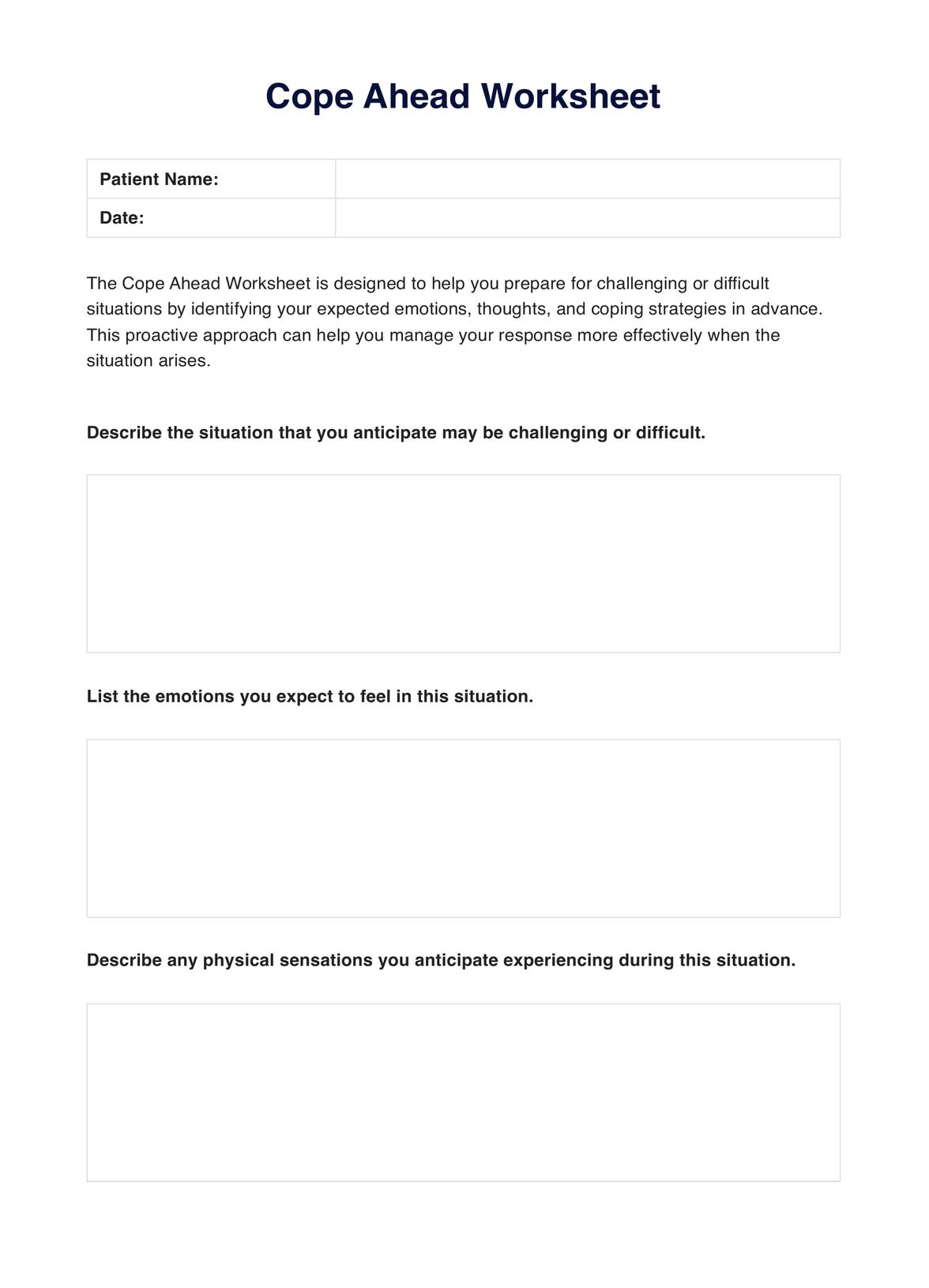Coping ahead is a concept commonly used in Dialectical Behavior Therapy (DBT), a therapy model that focuses on teaching skills to manage emotions and improve relationships.

Cope Ahead Worksheet
Master the art of coping ahead with our comprehensive worksheet. Prepare for challenging situations and enhance emotional resilience with Carepatron.
Use Template
Cope Ahead Worksheet Template
Commonly asked questions
To create a cope ahead plan, identify a stressful situation, list the emotions and thoughts you expect to experience, outline coping strategies, consider obstacles, and identify support resources.
A cope ahead plan for kids is a simplified version that helps children anticipate difficult situations, express their feelings, and identify simple coping strategies when they feel anxious—all with the support of a caregiver or therapist.
EHR and practice management software
Get started for free
*No credit card required
Free
$0/usd
Unlimited clients
Telehealth
1GB of storage
Client portal text
Automated billing and online payments











